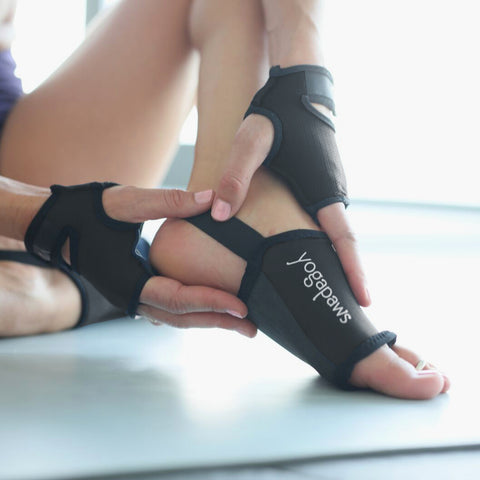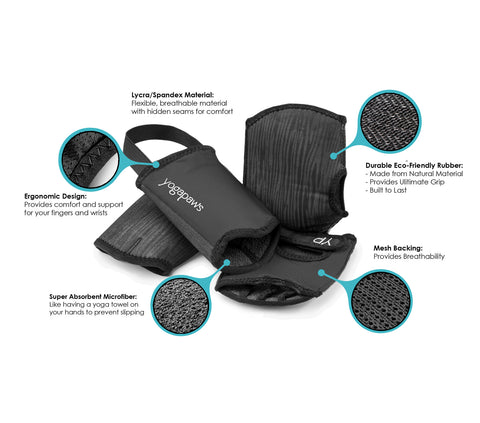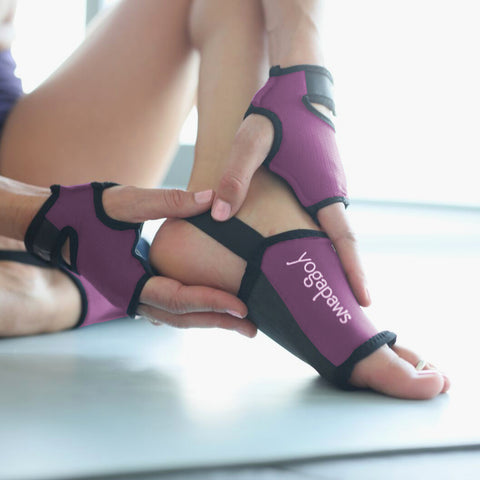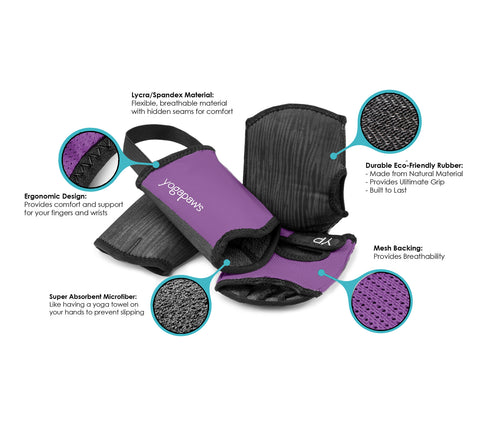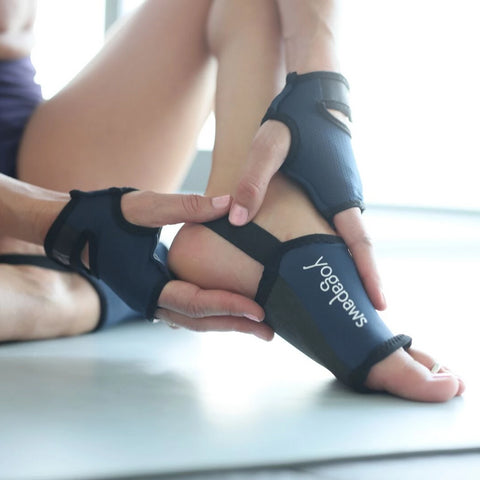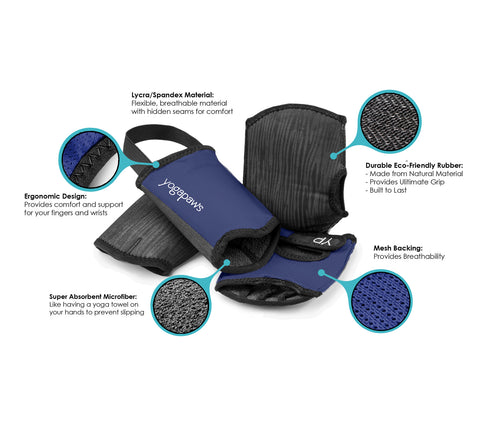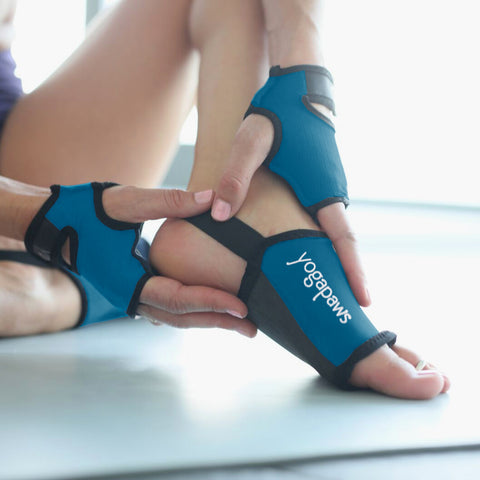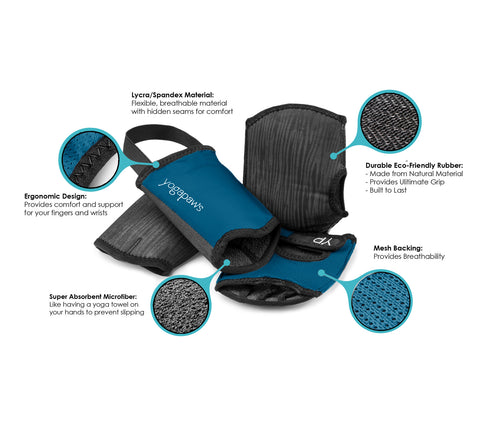Posted on January 24 2018
If you follow the Gregorian calendar or if you live in a culture that does, this time of year is all about new life and fresh starts. For yogis, it has a deeper meaning than the usual to-do list of resolutions (which less than a quarter of “resolvers” keep). The turn of the page from December 31 to January 1 provides an opportunity to de-clutter and detoxify, to rid yourself of the societal expectations that draw you away from your authentic self and to explore the treasury of resources that are uniquely yours.
 Before you promise yourself that THIS will be the year you lose weight, stop smoking, get your Registered Yoga Teacher Certification, or visit India, set aside a few hours during the last week of December to turn your eyes inside and take a trip through the inner landscape or your mind, body, and spirit.
Before you promise yourself that THIS will be the year you lose weight, stop smoking, get your Registered Yoga Teacher Certification, or visit India, set aside a few hours during the last week of December to turn your eyes inside and take a trip through the inner landscape or your mind, body, and spirit.
How’s the topography? Where are the high points and the valleys, the places that are open and positive or the places that still have a lot of debris and dead wood? You tell yourself you want to lose five pounds. Instead, look inside and outside. Ask yourself why? Do you want to shrink your body to gain acceptance from others or do you really feel you could function better in a contracted physical container? If you want to stop smoking, look at your heart and lungs from the inside. Then consider what unmet needs you have that make this habit worth endangering vital, dynamic parts of yourself.
With your eyes still closed, see yourself living the life you want—not as if this were a goal in the future, but right now. Watch yourself go through a day in this way. Think about what the essential factors are in being fully yourself. Then, start looking for the keys to open the doors to your own possibilities.
So often, the first key is just to get out of your own way. To begin your yoga practice or during a meditative walk, consciously inhale one or two adjectives that describe the optimal you. Exhale one or two adjectives that block you from living in that optimal experience. Don’t think “conditionally.” Assume you are living as your best self. Carry that intention through your practice and your day.
Yoga poses like the following one reinforce the notion that you can refresh and renew yourself. By suggesting poses that encourage you to twist out what’s unnecessary, you see your way to your authentic self more clearly. Inversions literally force you to experience life upside down. So push “play” for something like MC Yogi’s Ganesh Is Fresh album focus on the “elephant power” that you have within and the empowerment that comes from the love around you and intensify your journey toward moksha (liberation).

|
Matsyasana (Fish Pose) Benefits: This pose not only strengthens and tones the body but opens up the heart, lungs, back, and abdomen. Place a bolster, two blankets or a thin, folded mat where the bottom of your shoulder blades will be when you lie down on the floor. Sit in Dandasana (staff pose). To come out of the pose, roll your head up by dropping your chin toward your chest and push into your elbows. |
 |
Parivrtta Parsvakonasana (Revolved Side Angle Pose) Benefits: This pose helps to detoxify, as all twists do. It also increases flexibility and, if you stay on the ball of your right foot, improves balance. Begin in Tadasana (mountain pose) at the top of your mat. Inhale, raising your arms alongside your ears. As you exhale, step your right leg to the back of the mat. You can bend your right foot down at a 45-degree angle or stay on the ball or your right foot. Bend your left knee and sink, aligning your left knee over your left ankle and toes. Inhale, then on the next exhale, twist toward your left hip. Lower your arms and open them so that your left arm is back and your right arm is forward. Look at the fingers of your left hand if you have no neck pain. Inhale and lengthen, exhale and sink. Unwind, step your right foot back to the front of your mat to return to Tadasana. Reverse. |
 |
Hanumanasana (Monkey Pose) Benefits: A pose that invites you to push your boundaries, this split increases flexibility, stretches the hamstrings, thighs, and groin and stimulates the abdominal organs, which detoxifies and helps increase metabolism. To prepare for this pose, The Yoga Journal recommends: Supta Padangusthasana (reclining hand-to-big-toe pose) to open up the hamstrings of your front leg; Eka Pada Supta Virasana (one-legged reclining hero pose) opens the hip flexors of your back leg; and Lunge to lift the pelvic root toward your heart center, creating Mula Bandha (root lock). Listen to your body at each phase, putting your ego aside and controlling the stretch to a comfortable edge. If you are just starting to work toward splits, kneel behind a bolster. Extend your right leg over the bolster to the front, extend your left leg straight out of your hip and directly behind you, keeping a bend in your left knee or straightening it. Place your hands on either side of your torso as you allow your pelvic floor to sink into the bolster. Breathe there for about 20 seconds. Then, if you feel comfortable, bring your hands into prayer at the center of your chest. Allow yourself to sink further and breathe for 20 seconds. If you want to deepen the pose, slide the bolster out. Place your hands on the floor on either side of your torso and begin to sink your pelvic floor toward the floor. As a variation, when you achieve a full split, raise your arms up alongside your ears. Be careful not to push this pose or overstretch. Remember, it’s the journey. |
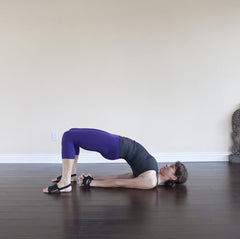 |
Supported Setu Bandha Sarvangasana (Supported Bridge Pose) Benefits: This hard-working pose calms your brain but also reduces anxiety, improves digestion and energizes your legs. Have a bolster, block or extra blankets near your mat. Lie on your back with your hands by your sides. Bend your knees and draw both heels close to your buttocks. Gently roll your back up, one vertebra at a time into Setu Bandha Sarvangasana. Place your support against the bony back of your pelvis. Explore the feeling of using the high, low and medium sides of the blocks or of stacking one more blankets beneath you. Sense the difference of aligning the bolster or blankets along your spine vertically. Hold the position for a minute or more, then slide the support to the side and lower your back one vertebra at a time to the mat. |
Yoga poses like these invite you to open up to new possibilities. But they also require discernment. A full split isn’t achieved overnight, but a supported bridge can be sweet from the instant your back touches the support. The aim here is to use mind, body, and spirit to dismantle the unnecessary boundaries that limit you and keep every moment from being a celebration.

